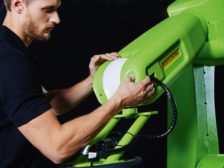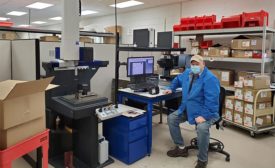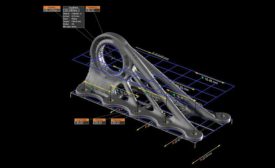ARTICLES
Vision & Sensors | Cobots
Collaborative robots helped manufacturers keep production lines running during the pandemic. They're accessible to small- and medium- sized businesses. And their simplicity just may help to shrink the skills gap.
Read More
4 Ways to Approach Data Mining
Data and connectivity are crucial to automation and therefore key to efficient, productive factories.
April 30, 2021
How digital process monitoring drives sustainability
Predictive tools, standardized data, and self-learning production systems can go a long way in helping manufacturers save energy and minimize their environmental footprints.
April 12, 2021
Eight factors to weigh when choosing EHSQ software
Interoperable, scalable, easy to use programs should be at the top of your list.
April 12, 2021
Back 2 Basics
The 101 on XRF Analyzers
Experts share details on the ins and outs of this technology
April 8, 2021
2021 Quality Plant of the Year: Electromed, Inc.
This medical device company and essential business faced extraordinary pressure to keep up with demand while managing its own safety in a pandemic.
March 5, 2021
Leading Amid Turmoil: Quality Leadership 2021
Excellence in quality is never a small feat. This year, it was even bigger.
February 10, 2021
Keeping Up with Additive Manufacturing
AM production enables the creation of parts not possible with traditional technologies through new design concepts, new materials, and new applications, but still presents challenges.
December 1, 2020
Are you making this major FAI mistake?
An intelligent TDP can save time and money.
November 5, 2020
Stay in the know with Quality’s comprehensive coverage of
the manufacturing and metrology industries.
eNewsletter | Website | eMagazine
JOIN TODAY!Copyright ©2024. All Rights Reserved BNP Media.
Design, CMS, Hosting & Web Development :: ePublishing




.jpg?height=168&t=1621530074&width=275)




